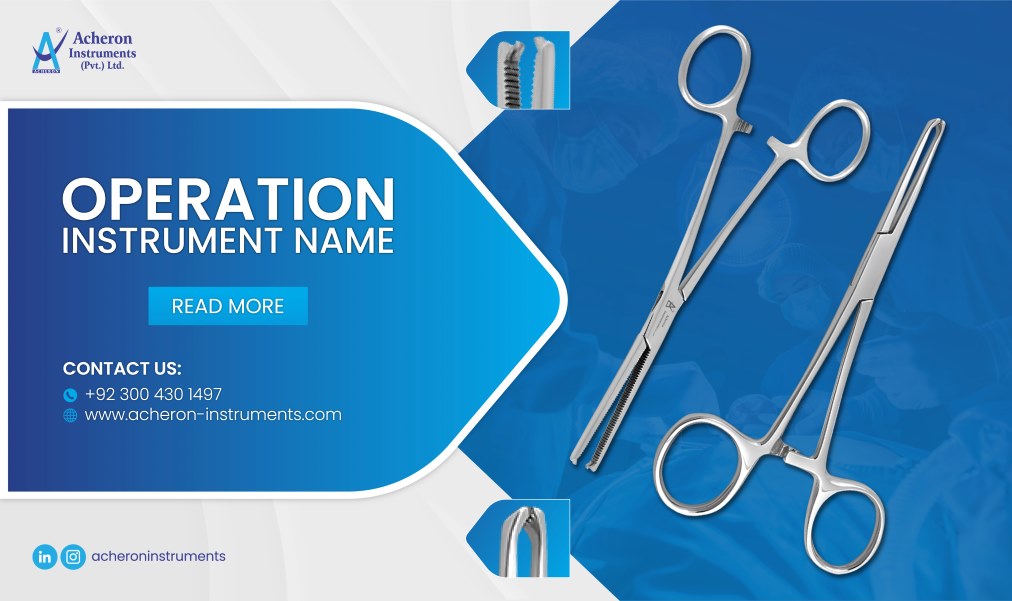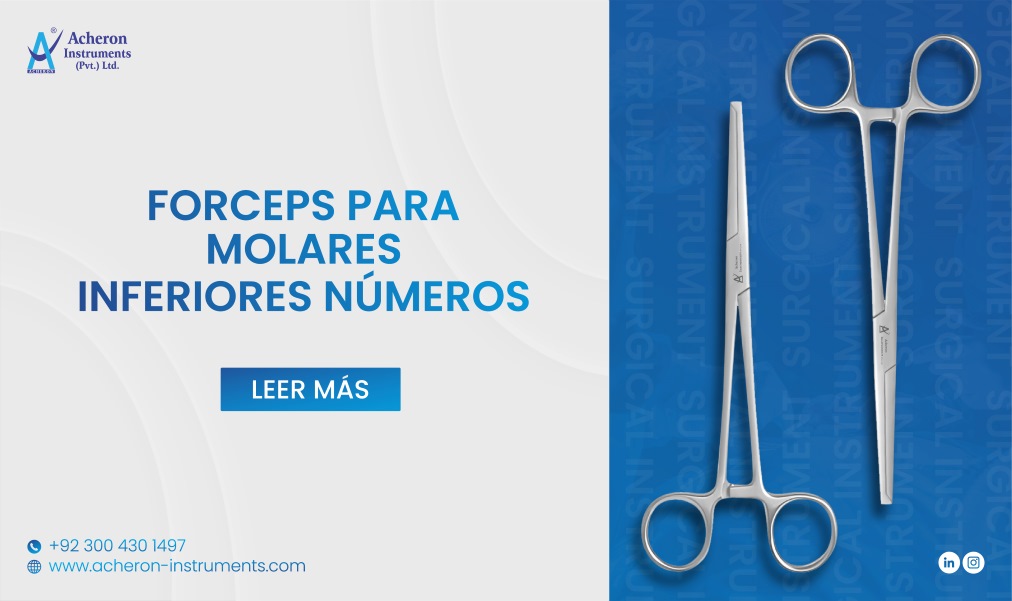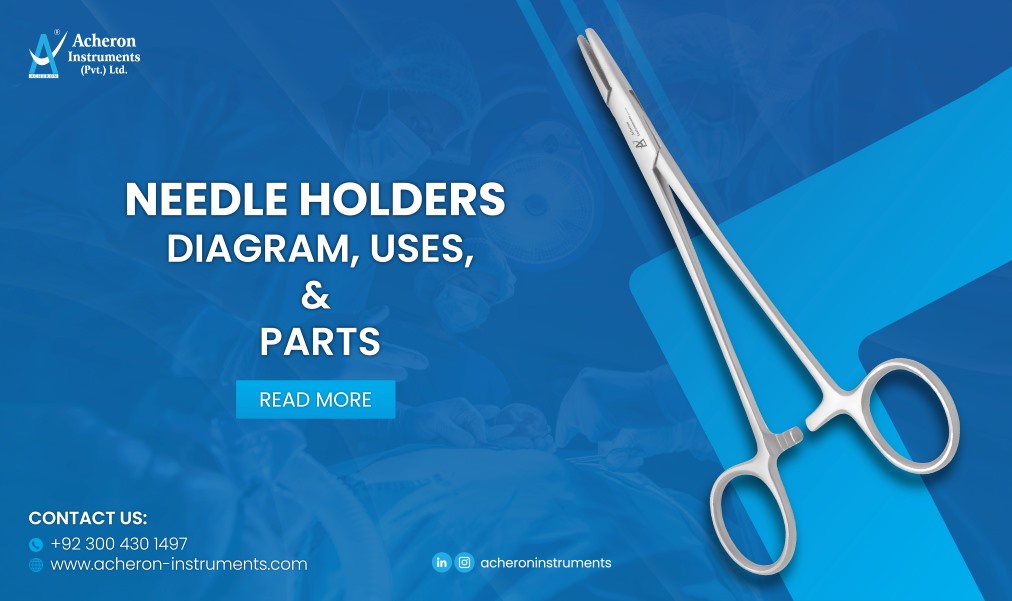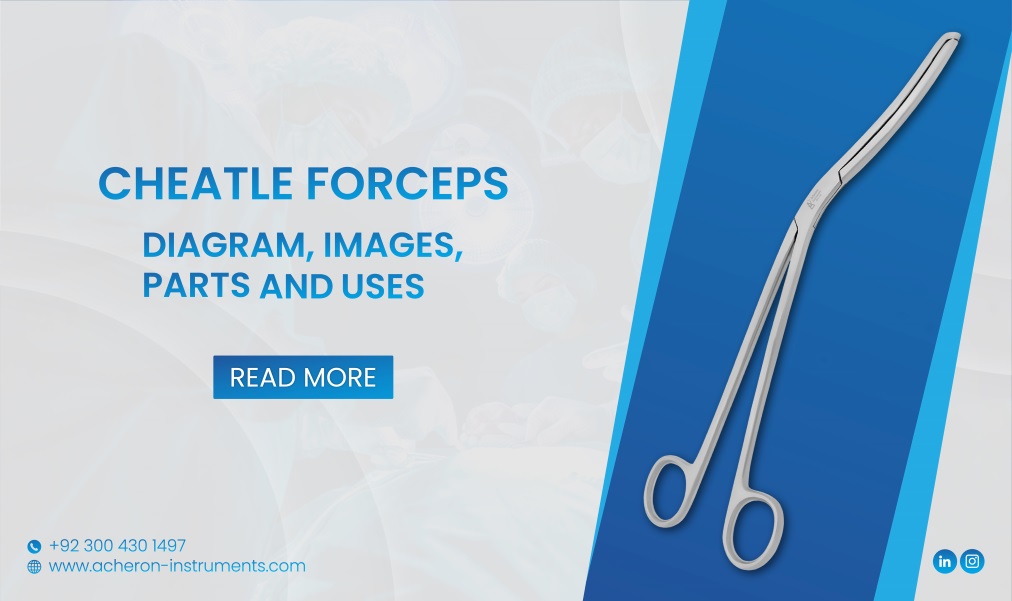When it comes to handling surgical instruments, there is always room for growth, especially, in the operating room where precision, skill, and careful handling are everything. One mistake can cause irreversible loss and severe consequences. Among various surgical instruments, needle holders are essential instruments whose importance in surgical procedures can be denied. Needle drivers stand out as crucial tools for suturing purposes and handling them correctly is vital for expected outcomes. If you are a healthcare practitioner interested in learning how to handle needle drivers, this blog is just for you! Let’s get started.
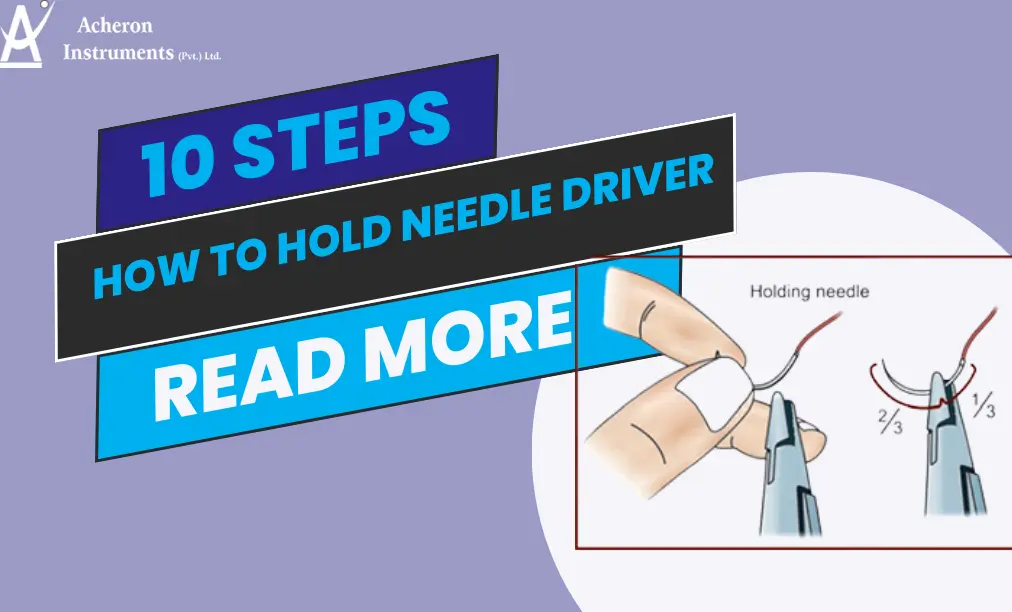
What is a Needle Holder?
A needle holder also known as a needle driver is a crucial tool for suturing purposes in the operating room. It facilitates the surgeons in handling and changing needles of various sizes according to their needs. They ensure a secure grip with reduced chances of slippage through their specialized design and ratchet locking mechanism.
Types of Needle Holders
Needle drivers have different and specific functions for handling needles of different sizes during suturing. Let’s explore some types of needle holders:
Mayo Hegar Needle Holder
Mayo Negar needle drivers are specialized for clamping larger and heavier suture needles of various lengths. They feature strong and wide jaws and cross-serrations.
Castroviejo Needle Holders
Castroviejo Needle drivers are versatile surgical tools for inserting needles through various tissues for suturing purposes. They feature flat handles, external serrations, and jaws of different shapes.
Crile Wood Needle Holders
Crile Wood Needle Drivers are available in serrated and non-serrated versions for holding different-sized needles for suturing.
Barraquer Needle Holder
Barraquer needle holders are versatile tools with slender, serrated jaws used for ophthalmology, plastic surgery, and neurosurgery medical disciplines.
Basic Design and Anatomy
Even though all needle drivers have different designs and specifications, here are some basic components of needle drivers:
Handle:
The handle allows the surgeons to securely grip the needle holders featuring a locking mechanism.
Jaws:
They are the gripping part having serrated and non-serrated surfaces to hold and prevent slipping.
Ratchet Locking Mechanism:
This mechanism allows the needle holder to lock in a closed position ensuring the needle holder is held securely.
Box Lock/Hinge:
Box lock is the center or pivot point where jaws and handles meet ensuring the opening and closing.
Shank:
The shank is the long, straight portion extending from the hinge to the handles.
To explore more about the Needle holders' components in detail, visit our article Needle Holder Diagram, Uses and Parts.
The Significance of Proper Needle Driver Technique
Whether you are stitching a wound or tackling intricate sutures, it is crucial to master needle holders for precise outcomes. The proper technique ensures precise sutures, controlled needle movement, and accurate tissue passage for optimal outcomes.
Step-by-Step Guide on How to Hold a Needle Holder?
Holding a needle holder correctly is necessary for achieving successful outcomes. For holding needle holders, here is a step-by-step guide for accurately grasping:
.webp)
Step 1: Select the Right Needle Driver
Firstly, it is vital to choose the right needle driver suitable for fulfilling specific surgical needs. Although, needle holders are designed for handling needles each needle holder has its specifications and has a distinct purpose. Like, Mayo Hegar needle driver is specialized for handling heavy and large-sized needles while barraquer needle drivers are specialized for ophthalmology. So selecting the right needle driver is crucial for achieving expected outcomes.
Step 2: Hand Positioning
Start by positioning your hand comfortably and ergonomically. Hold the needle driver with your dominant hand just like you hold a pen or pencil. Keep your fingers relaxed but keep the instrument in control. In short, maintain a gentle but firm and controlled grip on the instrument. This technique not only enhances your precision but also reduces fatigue in your hands.
Step 3: Thumb Placement
Position your thumb on one jaw of the needle driver ensuring that it rests against the flat side of jaws. Thus, it serves as a central point or pivot point for stability and controlled movement.
Step 4: Finger Placement
Use your index and middle fingers to control the opposite jaw of the needle driver. The tips of your fingers should rest on the textured surface of the jaws for enhanced and better grip and manipulation.
Step 5: Proper Alignment with the Needle
Align the jaws of the needle driver perfectly with the needle for accurate placement. This will ensure reduced risks of slipping and damaging the needle.
Step 6: Controlled Movement
Gently squeeze the handles of the needle driver and practice controlled movements resulting in jaws precisely and smoothly closing. Avoid excessive force leading to unintended tissue damage or loss of control. Moreover, applying excessive force can bend or deform the shape of the suture needle.
Step 7: Needle Grasping Technique
Position the needle near the tips of the jaws while grasping it for better control. Also, hold the surgical needle at a slight angle to allow for a controlled and smooth passage through tissues. Different kinds of needle drivers demand different techniques for holding as they their specific and distinct designs. Some needle holders have finger-ring handles and scissors-like designs while some have spring mechanisms with tweezer-like shapes. Here are a few techniques for holding needle drivers precisely:
Tripod grip (correct technique):
This technique is the most preferred technique by surgeons and is referred to as the “Thumb and Ring Finger Grip”. In this technique, the ring fingers and thumb are placed in the ring handle of the needle driver.
Tripod Grip (incorrect technique):
For a tripod grip, it is advisable to use the thumb finger ring to grasp the tool. Using the index or middle finger is not recommended, as it reduces control and precision.
Palm Grip:
The palming needle driver technique involves holding the tool in the palm without threading any fingers through the rings.
Pencil Grip:
As the name indicates, this technique involves gripping the needle driver just like you grip a pencil. This technique is useful for handling microvascular needle holders like Castroviejo needle drivers.
Step 8: Fine Tuning Grip Pressure
You need to fine-tune your grip pressure to master the art of holding a needle driver. Moreover, a delicate touch is essential for precision, and observing nuances of grip control will boost your skill of handling them.
Step 9: Adjusting for Different Needle Holders
A needle driver can facilitate different needle sizes which makes it versatile. So, alter your grip control according to the needle’s size and type, ensuring adaptability across various procedures.
Step 10: Practice and Familiarization
Practice makes a man perfect. The same is the case for needle drivers. Mastering the technique of holding needle drives requires practice and time. Spend your time familiarizing yourself with the needle drivers of different designs and practice on stimulated tissues. This will refine your skills making you an expert.
So, this was a step-by-step guide for mastering needle holders for precision and accuracy. Practice and time are the key to learning these techniques to achieve precision and accuracy.
Conclusion
As a practitioner, you must be aware of the use of surgical tools. In this article, we have provided you with a simple step-by-step guide for mastering the use of needle holders. Needle holders have specific designs suitable for fulfilling distinct surgical needs. Holding a needle driver is essential as it is widely used in surgeries and procedures.
The art of handling needle holders is a continuous and time-consuming process that requires practice. Without practice, you cannot get familiarized with the surgical instruments and cannot achieve expected outcomes.


